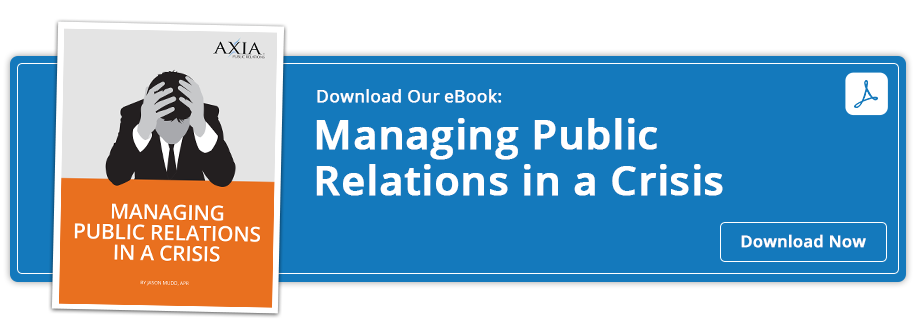 The world is amid growing panic driven predominantly by fear caused by a microscopic killer called Ebola. Americans now face a unique crisis as Ebola bridges waters and appears in a number of states across our country. Ebola is a viral killer and, naturally, fear and panic about how it spreads, infects and could potentially cause an epidemic in the United States has resulted in a scramble for answers and preventative measures from our country’s government, the U.S. Center for Disease Control and Prevention (CDC), hospitals, schools and more.
The world is amid growing panic driven predominantly by fear caused by a microscopic killer called Ebola. Americans now face a unique crisis as Ebola bridges waters and appears in a number of states across our country. Ebola is a viral killer and, naturally, fear and panic about how it spreads, infects and could potentially cause an epidemic in the United States has resulted in a scramble for answers and preventative measures from our country’s government, the U.S. Center for Disease Control and Prevention (CDC), hospitals, schools and more.
We can all sense the rapid escalation of the panic surrounding the crisis and how quickly the media gets wrapped up in the whirlwind of fear. Public relations professionals are called upon to attempt to contain the leaking fray of not only information breaches, but also rampant misinformation. Homeopaths have taken to social media, suggesting that Ebola can be treated homeopathically, while high-profile “social medialytes” are inundating Twitter with demands that the borders of the United States be closed completely to avoid the spread of the virus.
Ebola has the world tightly in its grip, and it will not easily let go, given fear-mongering and broad-reaching media interest in the subject. Heck, there’s now even a 24-hour news website staffed with nearly 35 freelance writers – just to cover Ebola – called Ebola Deeply.
Ebola itself is terrifying, but a nation swathed in fear is even more frightening, as without a clear or concise plan for collaboration among all the necessary organizations (White House, CDC, hospitals, unions) to manage the crisis, people are left to their own devices. That will ultimately result in even more widespread crisis, misinformation, leaks/breaches and devastating results. The damage is done: National Nurses United, the country’s largest professional association of nurses, has threatened widespread picketing. This organization believes that the CDC has not properly assessed, addressed or executed a plan to protect nurses, who are, of course, on the front lines of defense against Ebola. While training plans have rolled out within the last few days, nurses believe that the CDC is handling the situation in too cavalier a fashion and are upset that the CDC seems not to have a clear plan in place for a potentially large-scale outbreak.
The need for a crisis communications plan is real and apparent. Axia Public Relations consistently shares this view and encourages the creation of at least a general crisis communications plan. The CDC should absolutely have in place a crisis plan, as it is the absolute leader for public health information – whether it’s about Ebola or the common cold. It is unacceptable to many that such a broad-reaching organization does not maintain a solid protocol for small- or large-scale situations. What’s more, its ineptitude calls all its protocols into question, which further exacerbates an already volatile situation. The CDC has a serious public relations nightmare on its hands.
Even in the time it’s taken to write this post, hundreds of thousands of dollars have already been wasted, time drained and problems created due to the lack of a crisis plan. In contrast, it takes minimal time, money and effort to create a crisis communications plan, so that when it invariably is needed, you can manage the crisis as efficiently and effectively as possible.
Tips for developing a crisis communications plan
Our team of professionals at Axia reaches across several disciplines (PR, social media, journalism, strategy, finance, design). With this array of experience, we assist our clients in considering communications plans for varied audiences. With that in mind, we’ve assembled a few guidelines below that any company can consider – and every company should consider – should it wish to develop a crisis communications plan.
1. Think of various scenarios you could encounter in your business. Are you a finance organization where insider trading could turn into a crisis? Are you a semiconductor company with ties to Asia, where a weather crisis could impact manufacturing? Is your CEO battling cancer? Just about any business can develop a plan beginning with several scenarios that could occur; selecting the most obvious will help iron out guidelines for a communications plan and will also help determine the audiences you will need to inform.
2. Consider your main audiences. Most communications plans support both internal (employees, investors, stakeholders) and external (families, press, vendors, associates) protocols. Determining what and how much information your business communicates during a crisis is paramount. And remember: Honesty is THE best strategy. Never, never lie or misinform during a crisis. It will end your career and your business in a New York minute, guaranteed.
3. Develop a strategy for potential collaboration with external organizations. Sometimes, like in the Ebola crisis, organizations need to collaborate with others to advise, obtain information or disseminate a plan of action. Having a strategy in place will help ensure that everyone is moving forward in concert and doing everything in lock-step.
4. Prepare tactics to implement when a crisis occurs. This will become the most lengthy part of your plan, and will be the most supportive should you need to implement it. Knowing what you will do when a crisis occurs helps set staff in motion. If your CEO needs to stand in front of a slew of television cameras or take part in an interview with CNN, she’ll need training and talking points, for example. If your CEO is overseas, agree on plans for a second-in-command, as well. There are multiple tactics you can employ and specifically tailor to your operation.
5. Review your crisis plan. We recommend developing a crisis plan long before you ever see a crisis on the horizon, and that you review that plan – at a minimum – annually. What with employee/management turnover and shifts in business plans/direction or even market position, you’ll want to review who will execute the plan and what needs to be done on a regular basis.
Right now, our team is closely scrutinizing how things are unfolding relative to the Ebola crisis, as it has the potential to not only impact us all on a highly personal level, but a professional one, as well. Public relations team members inside the White House, the CDC, hospitals and schools are likely being swarmed with questions and high expectations to repair damage, but the fact is that the damage has already been done. Preparation is key, and to support our readers, we offer our downloadable e-book Managing Public Relations in a Crisis. We hope it will serve as a useful resource, and we remain on call to help any organization that may need PR support now or in the future.
 – Jason Mudd, APR, is CEO of Axia Public Relations. He is an Emmy Award-winning accredited public relations practitioner, speaker, author and entrepreneur. His public relations portfolio includes work for established national and emerging brands such as American Airlines, Budweiser, Dave & Buster’s, Brightway, Florida Blue, H&R Block, Hilton, HP, Miller Lite, New York Life, Pizza Hut, Ray Charles, Southern Comfort, Verizon and more. Connect with Jason on Twitter at @jasonmudd9 and Axia Public Relations at @axiapr. Be sure to tweet and share your thoughts below. We’ll read and respond to each of them.
– Jason Mudd, APR, is CEO of Axia Public Relations. He is an Emmy Award-winning accredited public relations practitioner, speaker, author and entrepreneur. His public relations portfolio includes work for established national and emerging brands such as American Airlines, Budweiser, Dave & Buster’s, Brightway, Florida Blue, H&R Block, Hilton, HP, Miller Lite, New York Life, Pizza Hut, Ray Charles, Southern Comfort, Verizon and more. Connect with Jason on Twitter at @jasonmudd9 and Axia Public Relations at @axiapr. Be sure to tweet and share your thoughts below. We’ll read and respond to each of them.
Topics: public relations, crisis communications



Comment on This Article